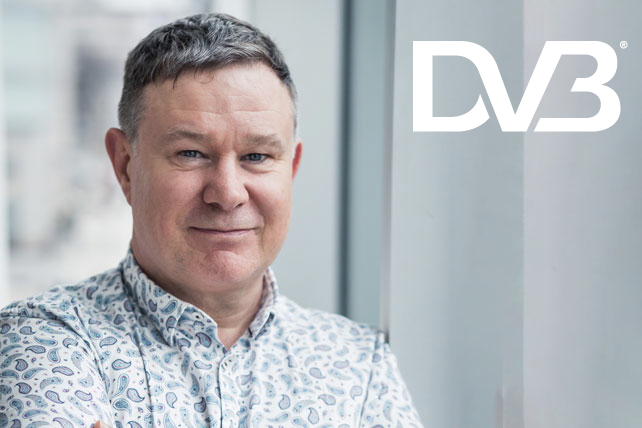
Seeking consensus on convergence
Peter MacAvock (EBU), Chair of the DVB Project
The media industry is undergoing its biggest revolution since the invention of television. We thought migrating from analogue to digital TV was hard – it was much easier that what’s going on now.
As we have seen in the cable TV sector, the march of IP is all conquering. What was once a transport stream delivered using 64-QAM and DVB-C is now largely based on DOCSIS with the latest versions being IP-only. (As an aside, this has an interesting impact on the delivery over cable of analogue FM radio services, which is still relatively popular. This is not possible anymore: it’s all IP, even down to lower VHF frequencies.)
Telephony is IP, cable TV is fast becoming IP. Direct broadcast satellite and digital terrestrial television (DTT) remain transport stream strongholds. But the world around broadcast television has migrated to IP, with households in developed markets now subscribing to multiple SVOD offerings and questioning the relevance of the public service licence fees that underpin European culture.
DVB’s big shift
DVB too has changed significantly from when I took over as chair in 2017. It has pushed an IP-first policy that is bearing fruit. DVB-I is a popular talking point at trade shows and can now be found in TV sets, underpinning extensive trials in Germany and Italy. Will it move to a mainstream technology available in all TV sets? Time will tell, but if I were a DTT operator, I would be building DVB-I into my proposition now.
As reported elsewhere, DVB’s recent successful demonstration at the BES India event is significant in showing how the organization has adapted to the challenge of a full-IP stack delivered over a broadcast network. Native IP (DVB-NIP) offers a full-IP architecture over a broadcast bearer, much like ATSC 3.0. Where it becomes powerful is when combined with other IP-based means of reaching consumers.
But this IP focus means DVB is now referencing more and more technologies coming from organizations such as IETF and W3C. On the surface, this would appear to be no problem – indeed it is both logical and desirable.
However, DVB’s processes are built along the same lines as those of organizations like MPEG, ETSI and others with IPR policies based on FRAND (fair, reasonable and non- discriminatory) terms applied to standard essential patents (SEPs). This contrasts with some of the organizations specifying internet technologies, where royalty-free patent policies are popular.
When the two worlds meet, sparks fly, stressing DVB’s consensus-based approach almost to breaking point. But addressing these stresses is key to serving the industry by providing for the interoperability and reliability of new technologies.
Scope for collaboration
In considering the confluence of the worlds of internet and broadcasting, we come once again also to the need for greater collaboration and cooperation between DVB, ATSC (US), ISDB (Japan) and DMB (China), and the variants. Internet technologies are global, and telecommunications is now also global; it’s time for those organizations supporting digital broadcasting to also come together.
Of course, you might expect me to say that DVB differs from those other organizations mentioned, but I think it does in at least one important way: our focus is on providing for DVB services across any network – traditional DVB broadcast or IP networks. Some other organizations are squarely focused on providing solutions for the broadcast industry; a subtle but important difference. But peel away the names, the geography and, to an extent, the politics, and you’ll find technologies common across all these systems. Collaboration should focus on these similarities, not on the differences.
Peter MacAvock is the Chair of the DVB Project. He is also Head of Distribution Platforms and Services at the European Broadcasting Union.
This article first appeared in issue 61 of DVB Scene magazine.

